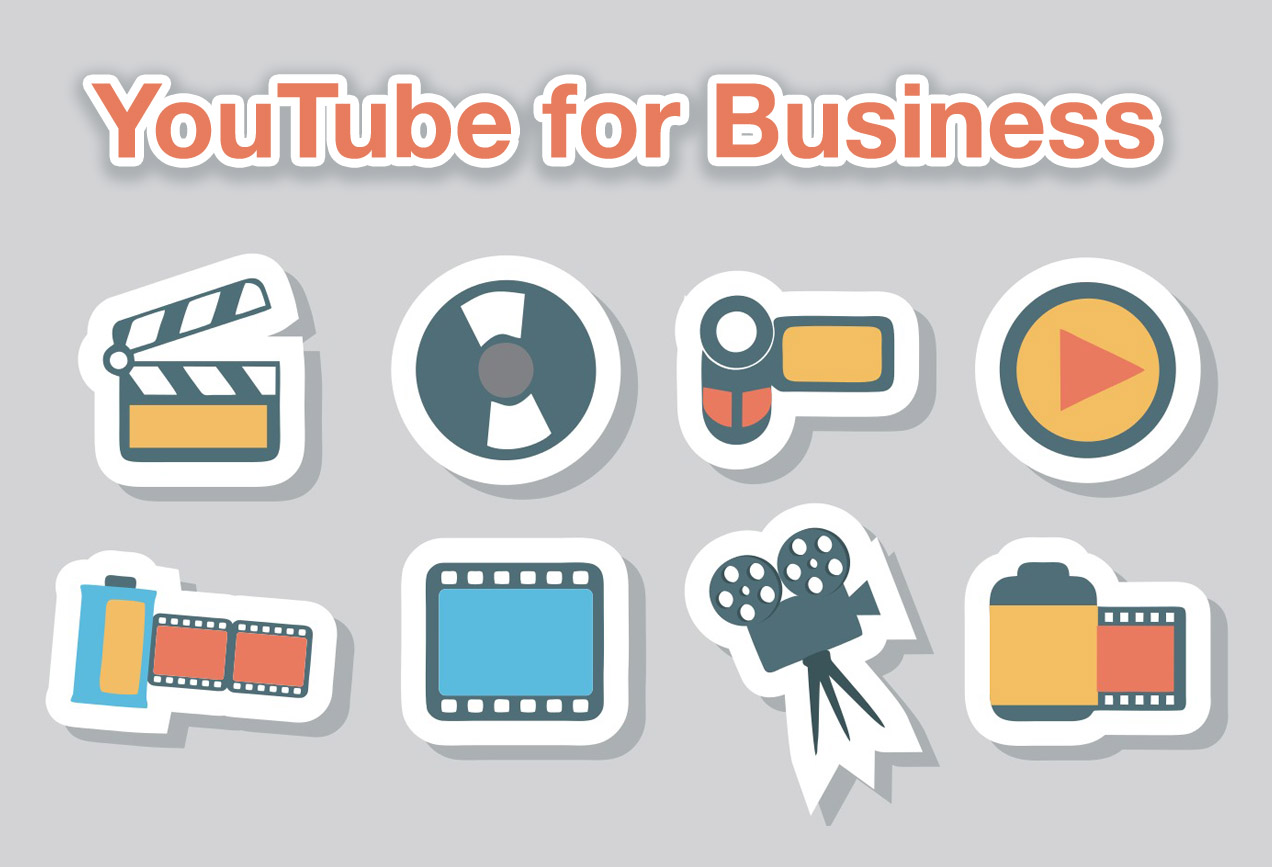
YouTube is the second largest search engine in the world, and the second most visited website according to Alexa.
YouTube is all about videos.
Web users love videos. They engage better with videos than any other kind of content.
This year, 2017, videos will account for 69% of all consumer internet traffic, according to Cisco.
The Online Publishers Association observed way back in 2007 and found that 80% of viewers recall a video ad they have seen in the past 30 days.
The study further found that 22% visited the product site. 15% visited the brand site, and 12% make the purchase.
59% of senior executives said they prefer video over text.
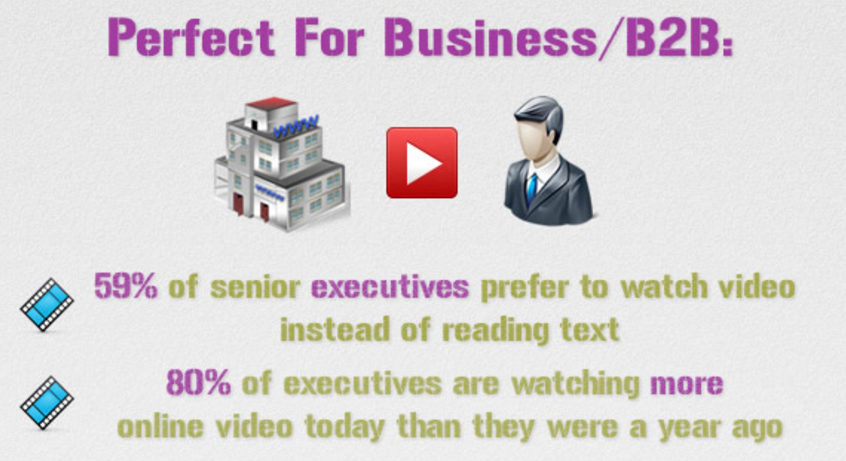
YouTube for Business – Executive preference
YouTube is the home of videos.
The base age demographic of YouTube viewers is 18 – 54. That means you can reach almost anyone on YouTube.
And keep in mind that videos aren’t just for YouTube alone. You can re-use your videos in a lot of different places on the web.
Your website. Blog. Facebook. Instagram. Twitter. Email. LinkedIn. And a lot more places where web users can view videos.
But let’s talk about YouTube.
The value of marketing on YouTube
People go to YouTube for one main reason:
To find and watch videos. Nothing else.
YouTube is a search engine, a video hosting service, a social network, a community, and of course, an advertising platform.
Yet, people go there to do one thing.
YouTube isn’t a place people go with the purpose of buying something. They don’t go there to get news, restaurant recommendations or travel directions.

Now, I’m not saying that to discourage you.
To get the real value of marketing on YouTube, you need to forget about selling.
Instead, you need to embrace what YouTube is about.
YouTube is a place where people discover interesting and entertaining videos.
Your strategy should revolve around this user intent.
Think of ways your business can tap into the power of videos to market on YouTube.
When you create a lot of interesting and entertaining videos, it leads to one thing:
Brand awareness.
Videos are a powerful way of generating brand awareness.
Video ads can increase brand awareness by 170%, increase your brand favourability by 500%, and increase the intent to purchase by 270%.

For people to consider buying from you, they must have heard or read about your company before.
It’s difficult to convert prospects the first time they learn about your business.
Familiarity breeds trust.
People who are more familiar with your business are likely to do business with you.
Some small businesses are already taking advantage of YouTube to increase awareness for their brands.
For example, Tracey Bell Dental and Aesthetic Medical Clinic has locations in Douglas, Liverpool, Ramsey, Castletown, and Birkdale.
They have a YouTube channel which has generated about 2.5 million views. That’s a lot of awareness for a clinic.
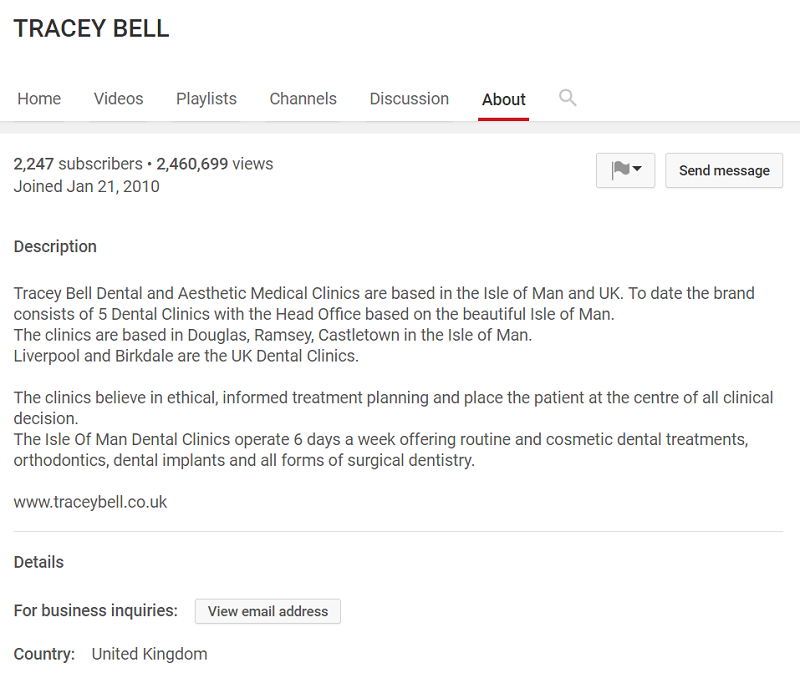
Tracey Bell YouTube Channel
They share the before and after of their various treatments and interviews with their patients.
The Harman Dental Clinic YouTube channel has received about 1.5 million views on YouTube.
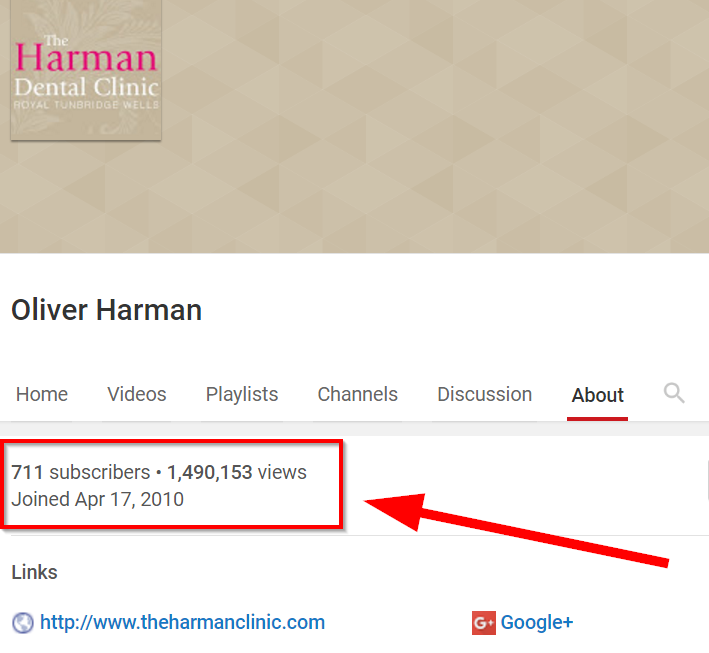
The Harman Dental Clinic YouTube channel
You should start creating interesting videos for YouTube before your competitors do. You still have a great chance to dominate your industry through YouTube.
Most small business owners are currently ignoring the platform.
The Chopping Block, a cooking school based in Chicago has already gained about 2.8 million views on YouTube.
They create informative videos like “How to Chop an Onion,” “How to Mince Garlic,” and “How to Make Crab Cakes.”
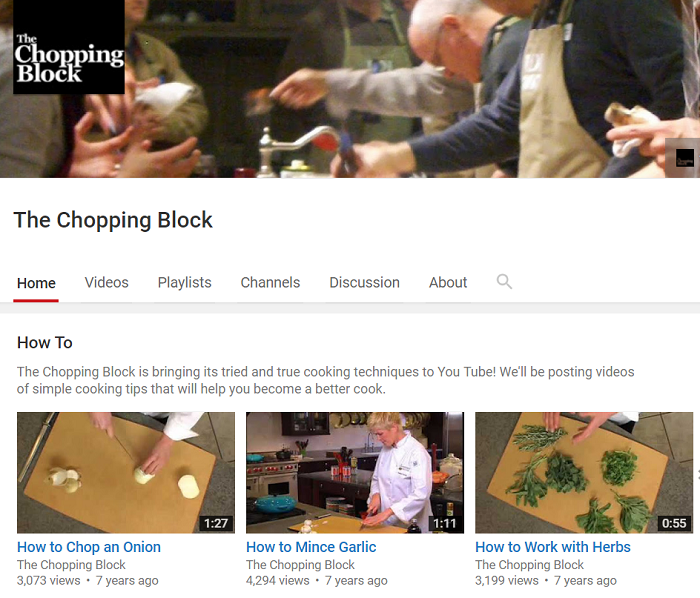
No doubt, their viewers love their videos. And that increases awareness for their cooking school.
Creating videos for YouTube will lead to more potential customers and influencers knowing and talking about your business.
It will also make your PPC campaign more effective because you can remarket to people who have watched your YouTube videos.
Creating videos also enhances your blog posts.
Putting your videos into your blog posts will only increase the average amount of time people spend on your blog. A high time spent on your website will increase your traffic from search engines.
Creating videos for YouTube also has another BIG benefit:
It helps you get press coverage.
Press coverage means more backlinks.
Backlinks lead to higher rankings on search engines.
A single coverage from a top publication or TV station can quadruple the number of customers your business receives.
Want to learn more about Youtube Marketing? Our favourite online course has to be from Udemy: YouTube Masterclass – Your Complete Guide to YouTube
Deciding on which type of video content to create for YouTube
The type of video content you create will depend on the kind of business you have.
For example, Scaling Retail is a consulting firm for retailers and fashion brands owned by Syama Meagher.
She creates videos that educate her ideal customers.
Here’s one of her YouTube videos. It has about 14,000 views.
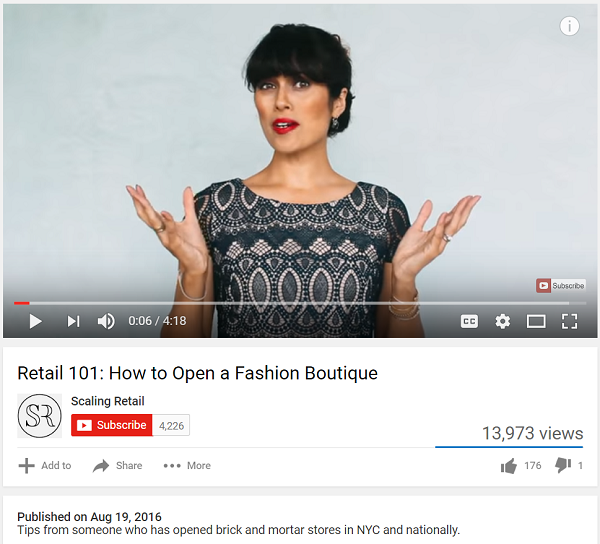
If you own any kind of consulting firm, you should create tutorial videos that target your ideal clients.
On the other hand, if you are a retail company that sells consumer products, you can make a short, creative video advert. This works well if you don’t have the time and resources to create educational video content on a regular basis.
Dollar Shave Club is a perfect example of a company that did this.
The founder made a hilarious video that turns peoples’ heads.
This video alone led to 12,000 customer sign ups within 48 hours the video was released.
A few years later, the company was sold to Unilever for $1 billion in cash. It all started with the above video.
If your company sells to the whole country or state, you should create a creative and funny video ad that could get people talking about your brand.
How to target and optimise your YouTube videos
As I mentioned earlier, YouTube is the second largest search engine in the world after Google.
Web users type in keywords on YouTube just as they do on Google.
You don’t just publish content on your blog and expect it to rank on Google. You optimise it.
You should do the same thing on YouTube. You should optimise your videos for the YouTube search engine.
Optimising your videos for YouTube is similar to the way you optimise your articles for Google.
The keywords you target should be relevant to what your business offers.
Use keywords in your video’s title and meta description.
For example, Zappos created a video that targeted the keyword “how to wrap a present.”
You’ll find the keyword both in the title and meta description:
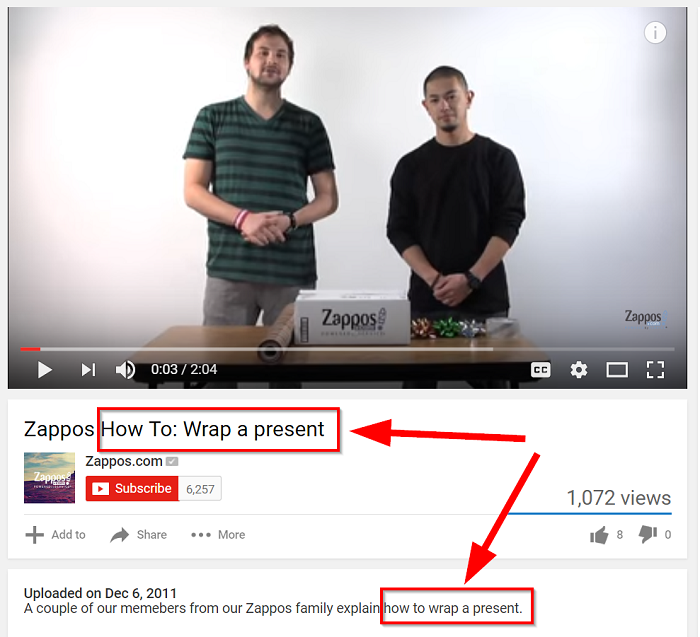
Make sure your YouTube video’s meta description is super long. The more relevant information it contains, the more keywords it will show up for on the YouTube search engine.
For example, your YouTube meta description should look like this:
Who should create the video content?
According to Ann Handley, the chief content officer of MarketingProfs, and a co-founder of ClickZ: “Any brand or company that isn’t using video in some way is missing out on a tremendous opportunity to bring its brand to life.”
That’s true.
It’s also true that many business owners are not comfortable speaking to a camera. Therefore, they don’t completely agree with the idea of making videos.
There’s a solution to this:
You can hire someone who’s better at talking to the camera. There are a lot of video production companies out there.
But I must confess that there’s a problem with this solution:
Most video production companies don’t truly care about your business. It’s hard to find a good company that is genuinely interested in your brand.
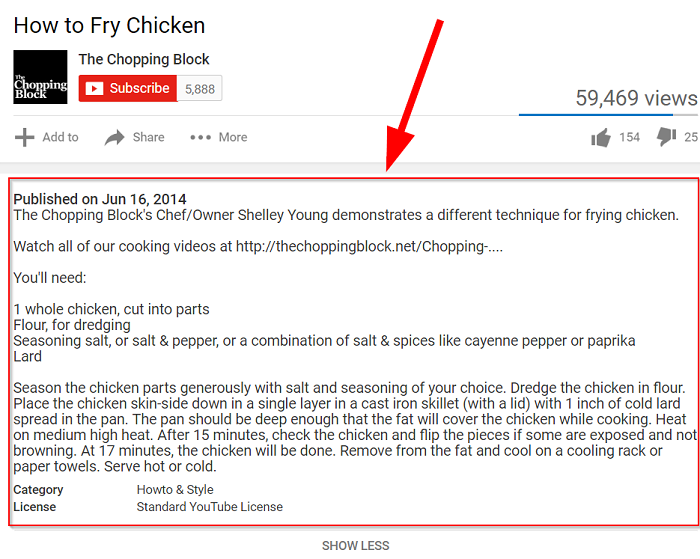
Video production is a lot of creative work.
Sometimes, you need to come up with tons of creative video ideas before you hit the perfect one.
To be honest, video production can be expensive and time-consuming, which is why a lot of companies don’t do it.
But the very few companies that do it are reaping huge rewards from video marketing.
According to these stats published on Buffer:
- Video generates 3x as many monthly visitors to a website as other content
- Visitors spend 88% more time on a website that includes video
- Organic traffic from search engines increases by 157% with video
- Consumers are 46% more likely to seek information about a product or service after seeing in an online video
- Consumers are 85% more likely to buy after watching a product video
- Consumers have 57% more confidence in their online purchase with video
If you want to have a big edge over competitors, you should be willing to dive head first into video marketing.
You should be comfortable talking in front of the camera.
You should be willing to create a lot of videos on YouTube and embed them on your website.
Think about things your ideal clients would love to watch. Start making videos about them.
You necessarily don’t have to learn about using the camera, but you should at least be able to present yourself like a TV anchor.
Gary Vaynerchuk turned his family, small liquor store into a $60 million business by creating videos for the web.

Today, Gary is a web celebrity.
Being the presenter in your videos will not only build your business, but it will also build your personal brand. You’ll become an influencer.
When you create videos on a consistent basis, companies and organisations will start inviting you to speak at their events. You may win a lucrative book deal.
All these create more publicity for your company.
How to write scripts for your videos
I hope I’ve managed to convince you that being the presenter in your video is the best thing to do.
Now, what’s next?
It’s time to start writing scripts for your video.
A well-written and engaging script is the key to making successful videos.
First, you need to sit down and write out what you want to say. This is called the preparation stage.
In the words of the great Alexander Bell, “Before anything else, preparation is the key to success.”
The words you hear in a movie were memorised from scripts. Actors don’t invent their own dialogue. They only say what has been written.
The same thing applies to video making.
Here are some useful tips that will help you write killer video scripts:
- Keep the script short. If you are just starting out, it’s important you keep your scripts short so that you don’t have problems memorising them.
- Put your message in the first 30 seconds. Your goal is to get the main message out as soon as possible before a viewer leaves. Putting your main point in the first few seconds will hold viewers’ attention. An increase in viewers’ attention will improve your confidence as a presenter.
- Speak directly to the audience. Use words like “you,” “your,” and “I.” These words help you speak directly to the audience. They make your video feel more like having a real-life conversation.
- Find your tone. Search for the tone you feel most comfortable with. You can find inspiration from your favourite speakers, YouTubers and TV hosts. You can add a bit of their style to yours. That’s how you find your voice.
- Tell a story. Storytelling is a powerful tool for engaging web users. People love hearing stories. Find ways to add interesting stories into your scripts.
- Use humour. Think of things that would make you laugh. Add some of those things into your script. Adding humour isn’t necessary. But they make your videos more interesting.

How to measure success on YouTube
Keep in mind that the main reason why you are creating videos for YouTube is to increase awareness for your company. Although, you can always include a link back to your website, product, or service page.
So how do you measure the success of your YouTube videos?
There are 6 metrics you should track to measure the success of your YouTube marketing campaign:
- Views over time. One of the obvious ways to measure your success is how often your videos are being watched. You can compare two videos against each other. A video that receives more views means it’s more successful. You can get this metric by logging into your YouTube Analytics dashboard.
- Audience retention. “Views over time” tells you the quantity of views your YouTube video got. “Audience retention” tells you the quality of views your video got. This metric will show you the exact time most people stopped watching your video. You can use this metric to know where the weaknesses of a video are.
- Shares. This metric is simple: It tells you how many shares a video has received. You can track each social network or combine social networks. It also allows you to exclude social networks you don’t want to track. You can locate this metric under the “Engagement reports” tab in your YouTube Analytics dashboard.
- Subscription rate. Go to “Subscribers” under the “Engagement Reports” tab in your YouTube Analytics dashboard. You’ll see a graph that shows you subscribers gained or lost according to the video. There, you can analyse strengths and weaknesses.
- Comments. You’ll receive amazing feedback from your audience through comments. If a particular video receives a high number of comments, it tells you that viewers find it engaging. You can use that feedback to create better videos in the future. Comments can be found under the “Engagement reports” tab.
- Likes, dislikes and favourites. Nothing is clearer than likes, dislikes and favourites when it comes to measuring a video’s success. These metrics will give you a clear picture of how your videos are doing. You’ll find them under the “Engagement reports” tab.
Note that by marketing on YouTube, you are not uploading videos on the platform and driving traffic to it.
What you are doing is, taking advantage of the natural traffic YouTube receives every single day.
Marketing on YouTube can expose your brand to visual content lovers. These people are hard to reach via written content. Also, your competitors are probably not reaching most of these people.
Want to learn more about Youtube Marketing? Our favourite online course has to be from Udemy: YouTube Masterclass – Your Complete Guide to YouTube
Discover
The 12 Marketing Secrets of Fast-Growth Companies
Find out what they do to achieve outrageous business success

Get your free copy

 By
By 
Post a Comment
You must be logged in to post a comment.